Updated: 30-Oct-2023
SCRAMJETS
(International)
A scramjet is considered a revolutionary propulsion system in which Russia, the USA, France and England are working. Sometimes in cooperation.
-It is capable of flying at seven or ten times the speed of sound and for which satisfactory tests have already been carried out.
For example, the tests carried out by NASA in the Pacific in 2004, with the X-43A. (Hyper-X).
-The tests with the Hysot III have also been carried out satisfactorily. This is an international project.
-The air flow is compressed at supersonic speed inside the engine, there it is heated by an injector and launched at extreme speed.
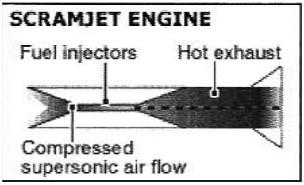
“Scramjet engine”
-Combustion therefore occurs at supersonic speed. Unlike rockets, this type of engine does not need to transport oxygen on board.

“Appearance of a Scramjet engine”
-In the magazine Investigation and Science, the above illustration appeared in which a “Scramjet” type engine can be seen better than in any other example. We can see that in the air intake the supersonic shock waves are compressed towards the combustion chamber.
-Alliant Techsystems is also working with DARPA and ONR on Hyfly (FASTT). At DARPA the Falcon. In the USA, the X-51A, etc.
From Appendix 6: In other chapters of this publication is referred to several “Scramjet” type engines capable of high speeds, such as Mach 25, an almost impossible figure referred to in the following design that has currently been tested at “only” Mach 6 .

“Cutaway drawing of the above mentioned scramjet” (PiP)
-All the important brands are working on the study of Scramjets. For example, Pratt and Whitney is testing an engine with variable configuration depending on the operating conditions.

“In subsonic mode”

“Up to almost Mach 5”

“About Mach 6”
-Not all Scramjets are square or rectangular in section. There are circular ones like the Russian engines from CIAM, or the USA DARPA (see).

“DARPA Scramjet”
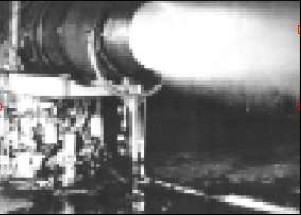
“Aerojet Techsystems Scramjet Tests”
-More recently, combined cycle scramjets have been discussed, such as the one planned for the Aurora vehicle (see).
-More Scramjet hypersonic engines are appearing, like this one from NASA Hypersonic Research, using liquid hydrogen to cool the engine that has reached Mach 7 in wind tunnels.

“Scramjet tested by NASA”
-A variant of the typical configuration was used in the X-15A-2 programs. It is this “Scramjet” that we have photographed in the wind tunnel.

“X-15 Scramjet”
From Appendix 7: Other views of the Scramjet designed by TsiAM (CIAM). These tests were carried out on the bow of a missile.
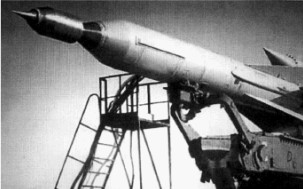
“Test scramjet, circular type”

"Ciam scramjet on its bench”
From Appendix 9: The flight of the American “Waverider” with a scramjet engine has just been announced in 2012.
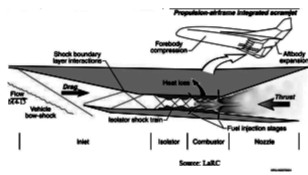
"Waverider scramjet schematic"
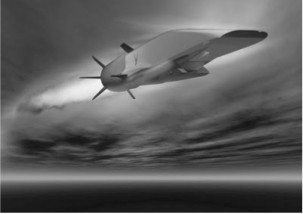
“Short but decisive flight” (PiP)
From Appendix 10: Around 1991, in Russia the liquid hydrogen “Scramjet” was tested. It was a hypersonic ramjet.
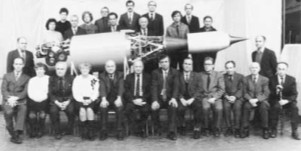
"Russian Isaiev team with their Scramjet"
-In the USSR, studies began between 1957/1960's. At the same time, Scramjets were also being studied in the USA.
-In the latter country the best result was obtained with the X-34A, but already in 2004.


